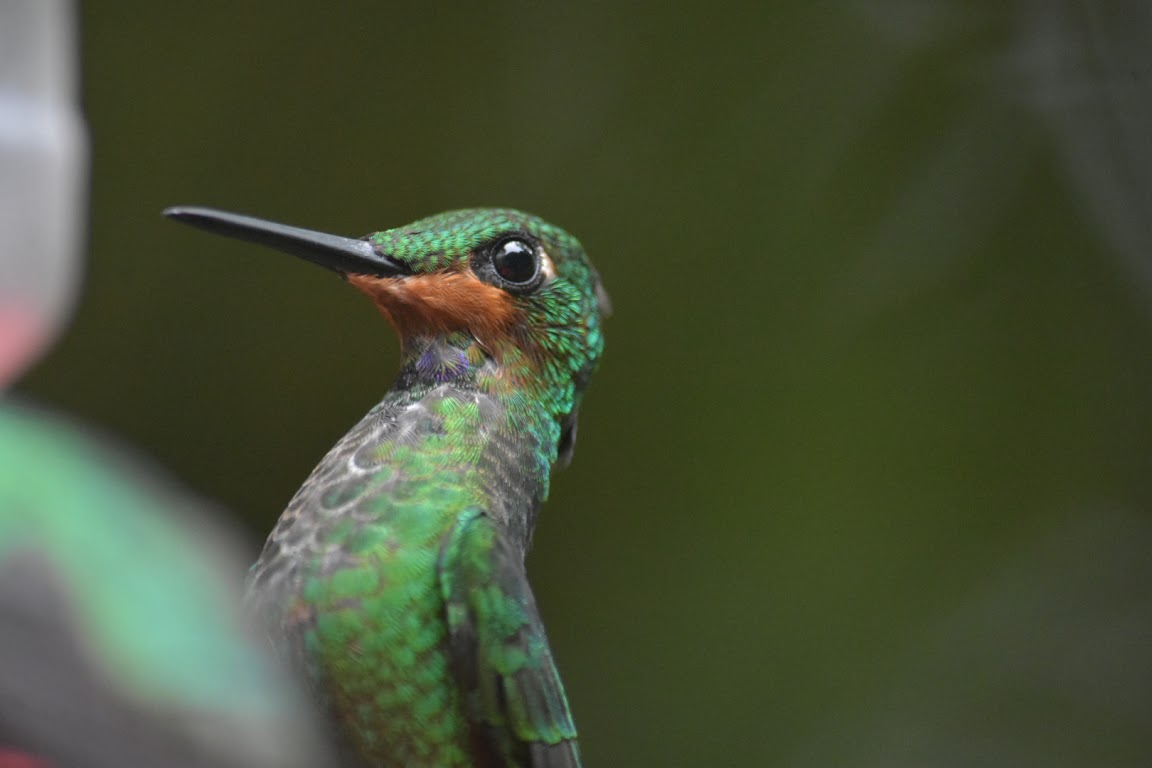How to plan a budget wildlife trip to Costa Rica
Costa Rica is a force to be reckoned with when it comes to wildlife tourism, sitting in the same league as East Africa and the Galapagos. This Wales-sized country has been drawing in biologists and casual wildlife enthusiasts alike since the 1970s when it made a name for itself as the face of ecotourism. From cloud forest-covered volcanoes in the centre to the most biodiverse rainforest in the world down by the coast, they had quite the solid foundation.
Costa Rica is safe and easy to visit, though it is quite a bit more expensive than many other Central American countries. Budget travel around here is perfectly possible as long as you follow the same guidelines as you would in, say, Europe or Australia. And with its natural wonders, it will be worth every colon!
Whether this is your first time reading up on Costa Rica and its wildlife or have already done a bit of research, this post is your ultimate guide to planning out that perfect trip.
Contents
Step 1: Decide what animals you’d like to see and find out where to see them.
Thinking about why you’re taking this trip, this should be step 1. Keeping it as brief as possible without doing Costa Rica’s incredible biodiversity injustice, here’s a guide to Costa Rica’s most iconic animals and where you can find them.
Sloths are, quite possibly, everyone’s target animal here. The country’s two species of sloth – two-toed and three-toed – can be found throughout the country, with La Fortuna being a particularly good spot. You can take dedicated sloth-spotting tours in nearby forest reserves such as Sendero Bogarin and Sloth Park, where it’s not uncommon to see multiple sloths on one walk. Some tours even offer a refund if you don’t see any! Most of the sloths you’ll see on these tours will be the three-toed species. For two-toed sloths, a night walk is the best option since they’re more active then.
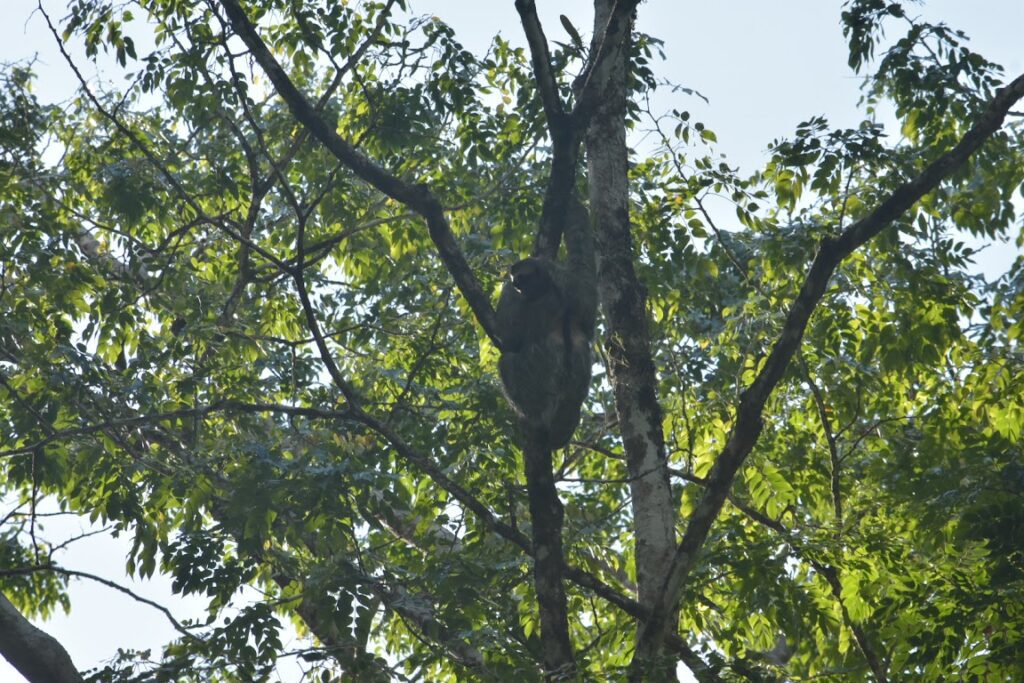
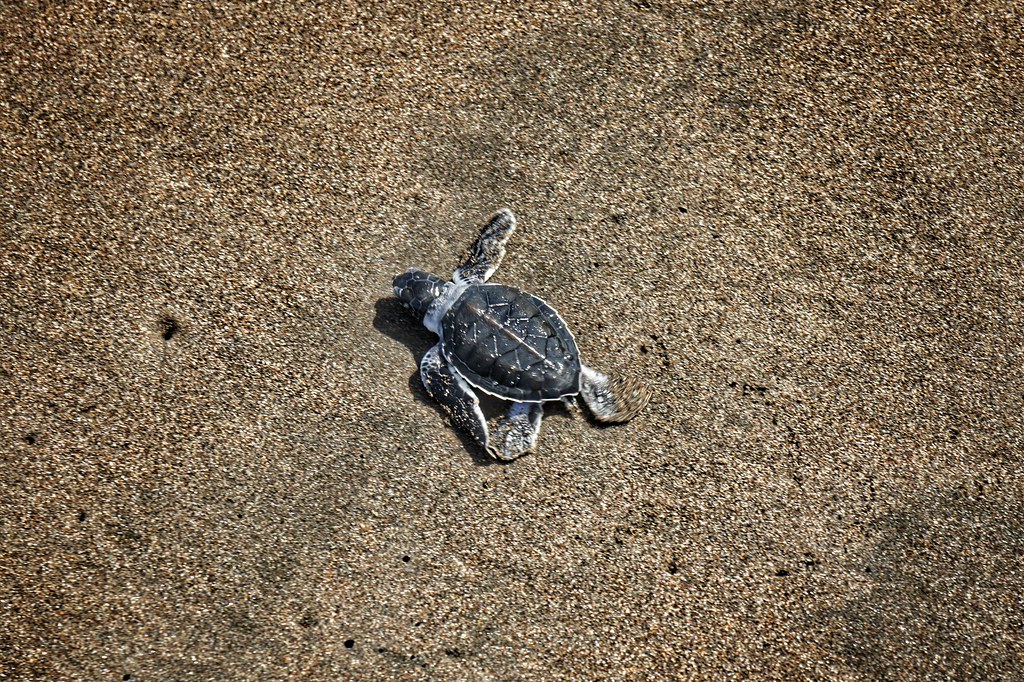
Sea turtles are a close second on Costa Rica’s most-wanted animals. The sight of adults coming ashore to lay their eggs or hatchlings scurrying down the sand are two of the country’s greatest wildlife highlights. If you visit Costa Rica’s northwest Pacific and time your trip perfectly, you may be lucky enough to witness an arribada – a spectacle in which hundreds of olive ridley turtles swarm the beaches for a mass egg-laying. There’s a lot to be said about the timings and locations of sea turtles’ egg-laying seasons, so if that’s what you’re after, check out this dedicated blog post by Costa Rica Experts.
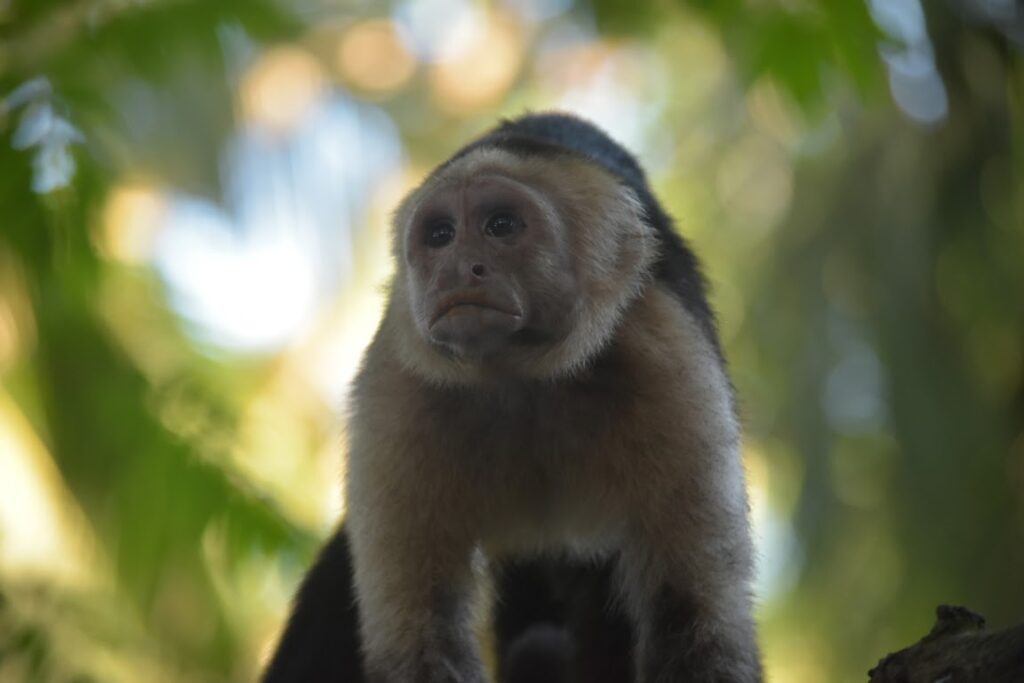

Costa Rica is home to four species of monkey – howler, spider, squirrel and capuchin.
Costa Rica is home to four species of monkey – howler, spider, squirrel, and capuchin. Howler monkeys are often heard before they’re seen, given that their wind-like calls can carry for miles. Black like a panther, you can find these all over Costa Rica, but the Osa Peninsula is the most reliable place to see them as well as the other three species. Spider monkeys are quite active and use their long legs and prehensile tails to swing through the trees, making them easier to spot. Capuchins are known to beg for food in Manuel Antonio, so keep an eye out for them, but don’t give them anything. Squirrel monkeys are the hardest to spot, but you have a good chance of seeing them on guided tours through Corcovado National Park.
Tapirs, the largest land animal in Central America, are generally very difficult to spot despite their huge size. However, in Corcovado and especially around Sierpe Ranger Station, you can often find them either lazing in pools of water or walking along the beach. Seems humans aren’t the only creatures living the pura vida lifestyle!
Costa Rica is famous for its wide variety of frogs, from brightly coloured poison dart frogs to the monstrous bullfrog. The most famous is the red-eyed tree frog, which is an expert climber and is most often found on night walks in the Osa Peninsula and La Fortuna. Guides will usually make an extra effort to find them for guests since they’re a big-ticket species.
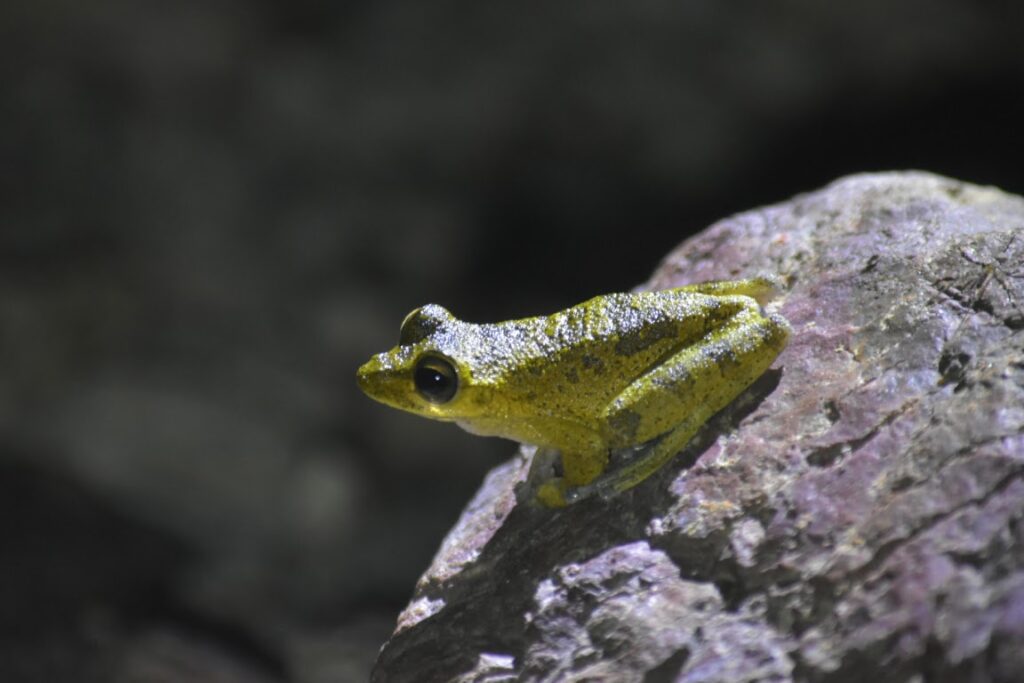
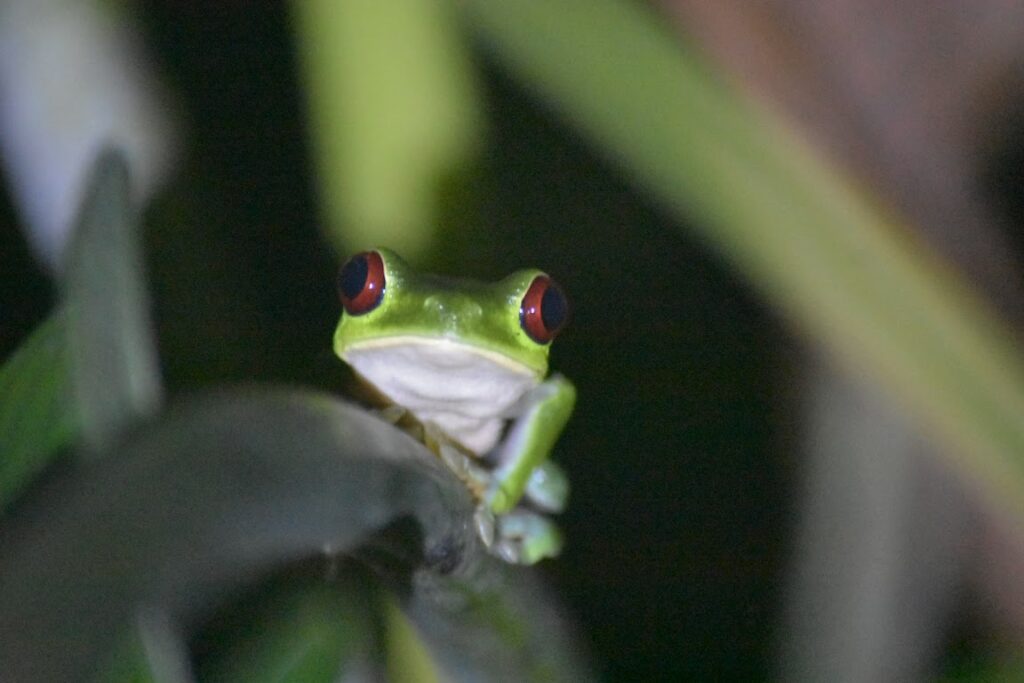
Night walks also have a tendency to turn up snakes, including green vipers and the hyper-venomous fer-de-lance snake, as well as spiders. To spot a tarantula, take a night walk with Kinkajou Night Walks in Monteverde since they have a resident on site.
Just like other groups of animals, Costa Rica has a wealth of birds, and visiting different locations is the best way to see as many as possible. If time is tight, you should either rent a car to reach more locations or focus on doing Monteverde and Corcovado National Park. The former, with its cloud forests, is home to the three-wattled bellbird and resplendent quetzal, two species as bizarre as each other. The latter, meanwhile, is home to a variety of species: pelicans and boobies in its waters, herons and ibises in the mangroves, and trogons and tanagers in the forests. On top of that, you’ll likely spot scarlet macaws flying overhead while taking a dip in the sea.
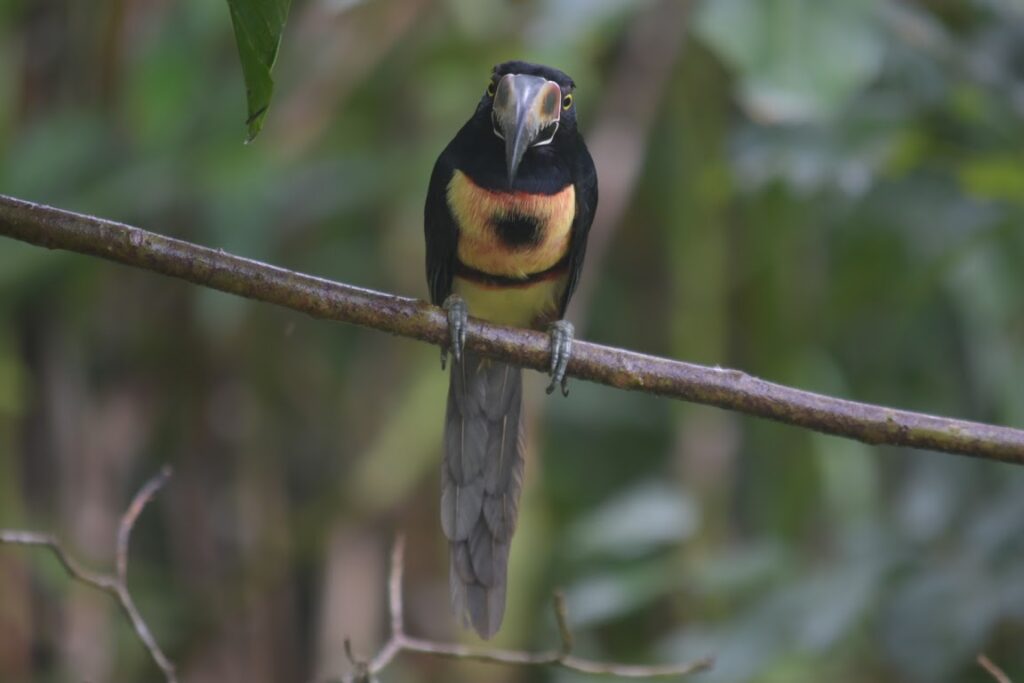
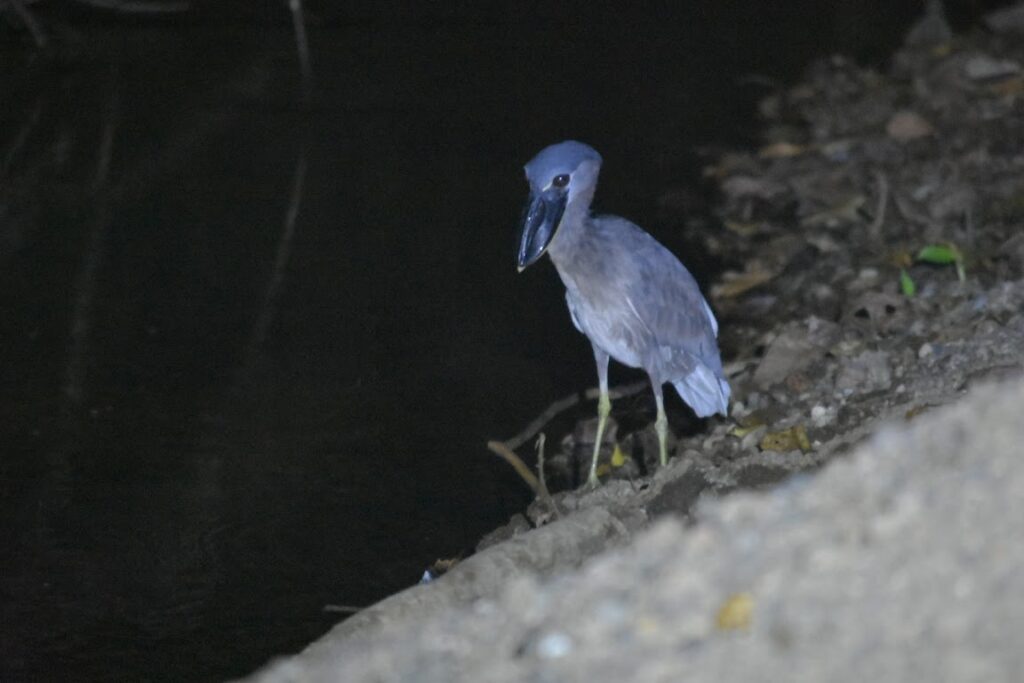
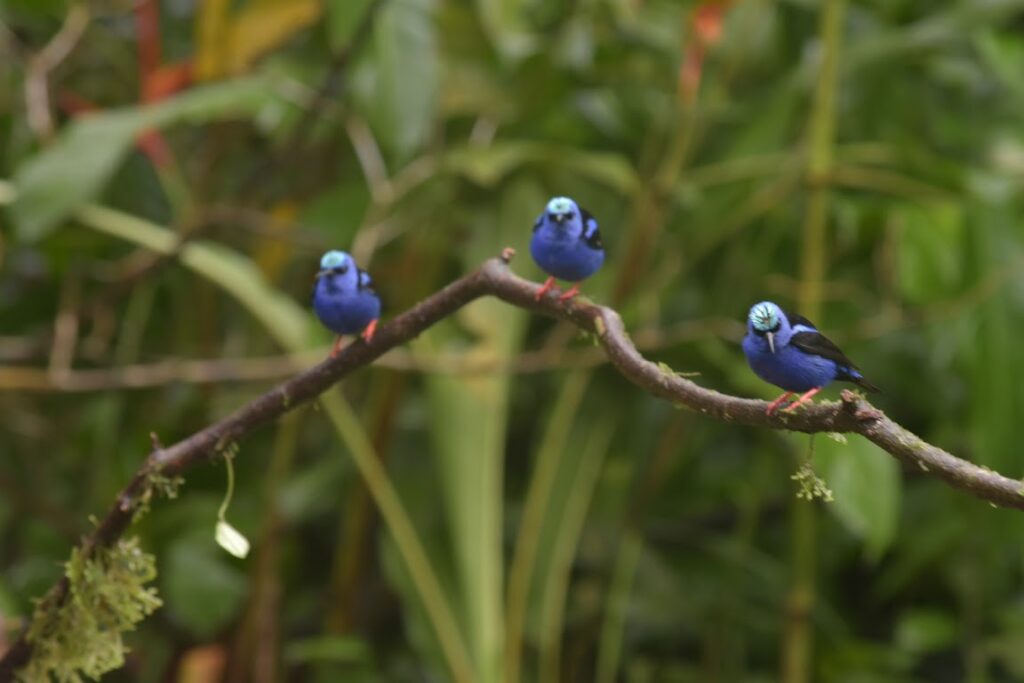
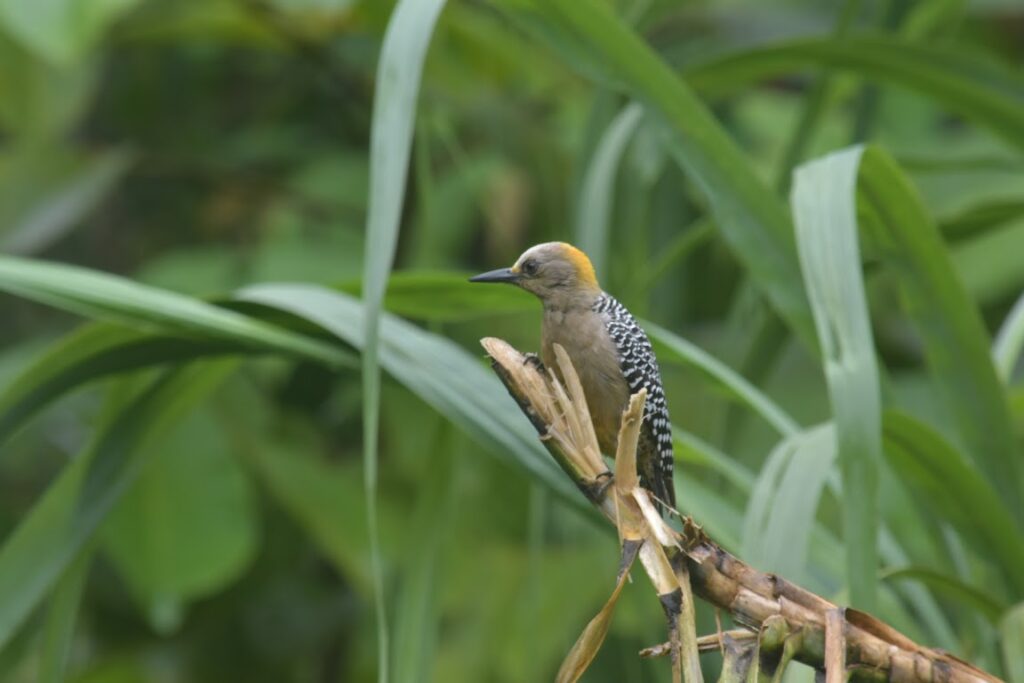

Lucky visitors may spot anteaters in Corcovado or the mangroves near Manuel Antonio National Park, while even luckier visitors could spot wildcats such as pumas and ocelots. Be warned though, most guides only see them once or twice a year.
Finally, for any fans of Jurassic Park, San Jose might be worth a visit since it boasts the country’s top paleontology museum. Aside from that, Corcovado National Park provides plenty of things to get your imagination jogging, with its prehistoric-looking forests and pterodactyl-like pelicans soaring overhead.
Step two: Research places to go in Costa Rica and how long to spend in each
San Jose
The capital of Costa Rica and the country’s one major city, San Jose doesn’t exactly instil FOMO in visitors. Most simply pass through, on their way to the Costa Rica they came for in the hills and by the coast. The only compelling reason to hang about is if you’re a blogger who needs a “boring” city to do some work in (good day, folks) or if you want to see some of its museums. In fairness, some might be worth your while: there’s one with the largest collection of pre-Columbian gold and another with an impressive collection of fossils.
Recommended time here: 1 day at most, though don’t feel bad if you’d prefer to skip San Jose.
La Fortuna



Sitting under the shadow of Arenal volcano or rather, the clouds that often blanket the sky, the small town of La Fortuna is an outdoor lover’s paradise. Much of the best wildlife spotting is actually to be had on lower ground and on the border of the town. Sendero Bogarin is a fine one-stop wildlife shop if you’ve only got a limited amount of time, with sliced fruits left by the entrance that attract a wide variety of birds including toucans. Sloths are also common in the forests, with guides frequently showing visitors multiple on each tour. The same holds true for the aptly-named Sloth Park next door.
If you’ve got a bit more time on your hands, you might want to pay a visit to Arenal Oasis Eco Lodge. Located a little outside La Fortuna, the lodge and its surroundings are home to some extraordinary birds, such as the white-collared manakin, a bird that actively bounces about the forest floor in hopes of attracting a mate, and the great curassow, a massive prehistoric-looking bird that produces a gentle booming sound.
Recommended time here: One full day spotting wildlife at Sendero Bogarin and Oasis Eco Lodge. The order in which you visit them doesn’t matter since their highlight animals are active in the morning and afternoon, and they’re in close proximity, so you don’t have to wake up early. If you want to engage in activities such as rafting, ziplining, or climbing Arenal, add more days to your itinerary.
Monteverde



Monteverde is the name of a region high up in the hills, and most travellers stay in the town of Santa Elena. The surrounding cloud forest reserves are a must-visit for birdwatchers, with motmots, toucans and trogons inhabiting these misty mazes of mossy trees. The star of the show, though, is the resplendent quetzal, a bird whose extraordinarily long tail feathers have to be seen to be believed.
There are several reserves nearby but three that are worth mentioning are Curi Cancha, a good place for quetzal, Monteverde Cloud Forest reserve, the most popular reserve with its steel bridge, and Cafe Colibri, a cafe where hummingbirds flock to nectar-filled feeders on the terrace.
I also did a night walk a little outside of Santa Elena that turned up tarantulas, snakes, a sloth and a tree-climbing porcupine. The porcupine had a French girl in my group insisting three times to the guide that it was a monkey since it had a tail – oh mon dieu.
Insider tip: Bring layers. This was the one place that I, a Scotsman, called cold.
Recommended time here: two full days, so that you can visit both Curi Cancha and Monteverde in the early morning when birds are more active. In the afternoon you can visit Cafe Colibri since the hummingbirds are there at any time – combine this with Monteverde since it sits right next door – or do one of Monteverde’s other activities: chocolate tours, ziplining, etc. That also leaves the evening free for going on a night walk – some of these start at 5 PM and others at 8, and you’re better off doing the later ones since guides will remember animals’ positions from earlier walks.
Manuel Antonio National Park and Quepos



Tiny and easily accessible, Manuel Antonio National Park is without a doubt the country’s most popular wildlife location. Don’t go expecting pristine wilderness – after 9 AM, the trails get so crowded that it can feel like a recreation of a rush hour back home. If you want to visit, book your tickets in advance. I didn’t and unfortunately wasn’t able to get in since only a limited number are available (though it is a very high limit).
The only reason why I mention this park is that the crowds and the guides they accompany can make wildlife spotting easy. A group with binoculars and a scope trained on a tree is a surefire sign that there’s a sloth or a monkey up there.
Nearby, the mangroves of Damas Island are good places to spot monkeys, herons and basilisk lizards, and will give you some much-needed tranquillity after Manuel Antonio. If you’re lucky you might even see a sleeping silky anteater, a small species that looks like a hairy fruit when curled up. Organising a boat tour can be a little tricky if you’re travelling solo since they require a minimum number of people to run, and even in the high season I found most operators didn’t have the numbers. There are also night boat trips that specialise in looking for crocodiles.
Recommended time here: one full day for wildlife spotting – spend the morning in Manuel Antonio when the crowds will be at least a little lighter on the ground, and the afternoon or night in the mangroves. Quepos doesn’t have much else to do, save for a bunch of beaches along the coastline down to Manuel Antonio.
The Osa Peninsula



Jutting out the side of Costa Rica’s southwestern coastline, the Osa Peninsula is blanketed by vast tracts of rainforest, most of which lay within Corcovado National Park. Covering an area of 164 square miles of rugged mountains, pristine beaches, and dense rainforests. National Geographic dubbed this place the “most biologically intense” in the world, and it’s not hard to see why. Its forests teem with monkeys, sloths, tapirs and brightly coloured birds, while whales, pelicans and dolphins congregate offshore.
After a famous incident in which the country’s Environmental Minister got lost in the park and trampled by a tapir, all visitors are required to have a guide with them when visiting the national park itself. Visitor numbers are also strictly regulated, so book early if you want to get in.
Osa Peninsula is much more than just Corcovado, though, with the forests north of the park and the mangroves on the west side also worth exploring. During a night walk, I saw plenty of frogs and snakes, including the famous red-eyed tree frog and the fer-de-lance, the most dangerous snake in all of Latin America.
Recommended time here: three full days at minimum, with two of them spent at Sirena Ranger station. This will give you the best chance to spot all of Corcovado’s wildlife, and leaves a day free for whale watching, independent hiking near Corcovado, snorkelling or relaxing. It also leaves a night for a night walk, since spotlighting in Corcovado itself even near the ranger stations is banned. Hardcore wildlife enthusiasts will want to arrange a longer stay in the forest to stand a better chance of spotting some of the park’s more iconic animals, including tapirs and tamanduas.
Tortuguero National Park
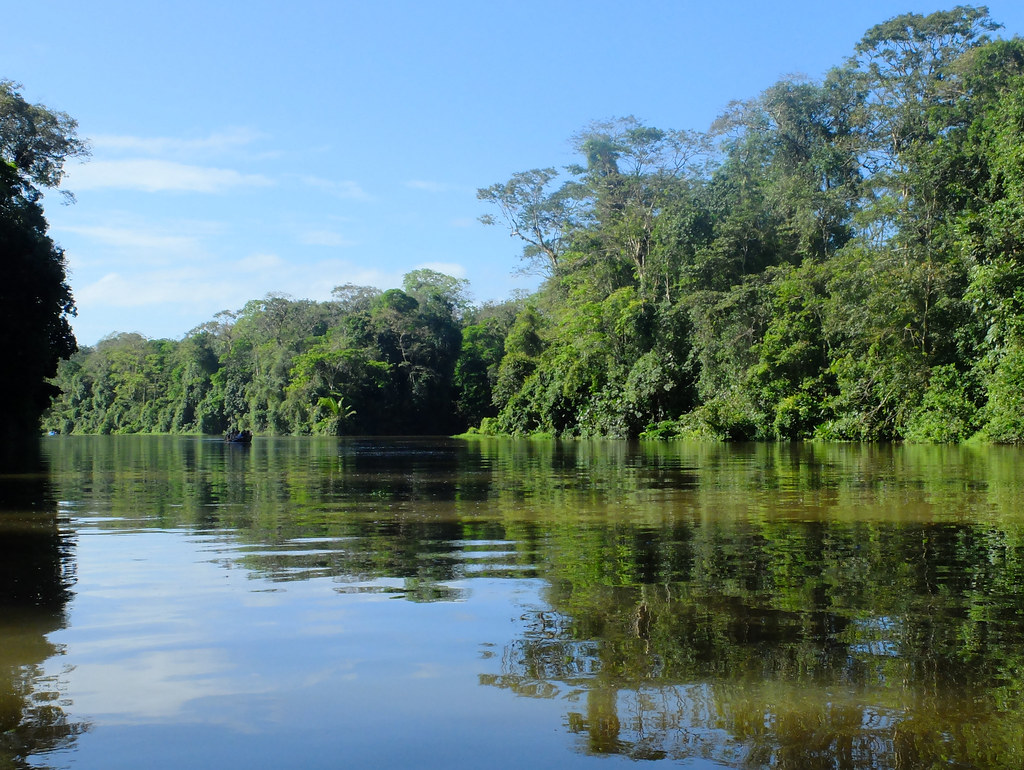
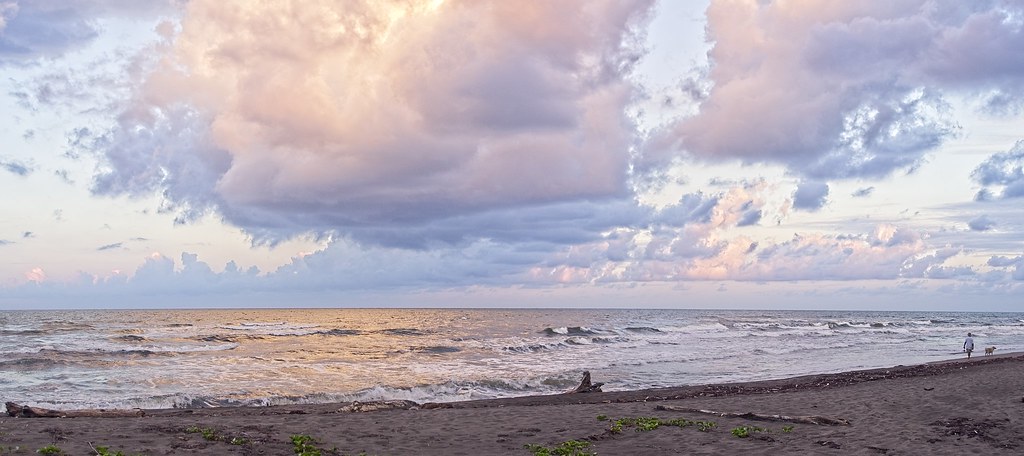
Costa Rica’s Caribbean coast is the wilder side of an already wild country. While its Pacific counterpart received all the settlement and development, the Caribbean coast largely stayed untouched by humans for the most part. Tortuguero National Park protects a significant portion of this wilderness, covering a vast expanse of wetlands and beaches on which turtles come to lay their eggs.
The village of Tortuguero, nestled slap-bang in the middle, is the best place from which to access the park, and its Afro-Caribbean culture makes it a fine place to stay in its own right.
Recommended amount of time: two full days at minimum. As the turtles are the main draw here, you’ll want to give yourself a few nights (assuming you’re visiting between March and October) to stand a good chance of seeing them on the beach. If you’re successful on your first night, there are also conventional night walks that often turn up the usual repertoire of snakes, spiders and frogs. During the daytime, you can kayak through the mangroves to spot aquatic birds or go hiking through the forests where there’s a good chance of spotting green macaws.
Nicoya Peninsula

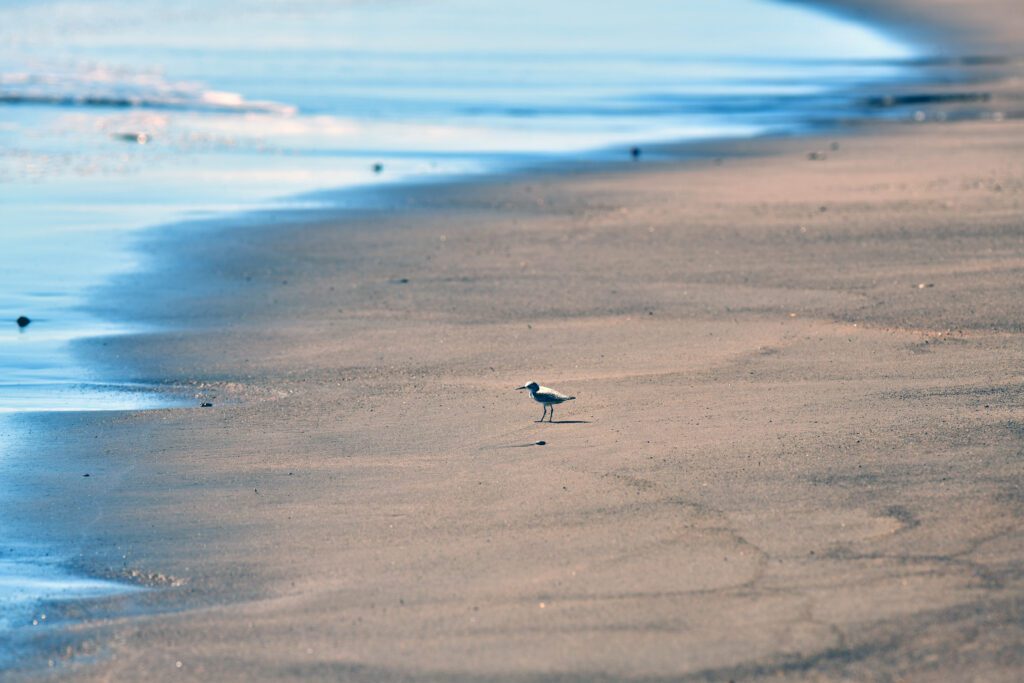
Almost identical in shape to Osa Peninsula further down the coast, Nicoya Peninsula isn’t as wild yet nor is it as heavily visited (or expensive). Dotted around are several wildlife refuges, though there are two that should be on your list should you make the trip. One is Curu Wildlife Refuge where, with its mix of mangroves and rainforests, visitors can spot most of Costa Rica’s iconic animals including three of the monkey species and a newly reintroduced population of scarlet macaws.
Another is Ostional Wildlife Refuge, which plays host to one of the most impressive natural spectacles in all of Costa Rica. Every year, for a few weeks in September or October, sea turtles land to lay eggs by the thousands. Walking along the beach isn’t permitted at this time, and nor would it even be possible when the mass turtle landings (known as arribadas) are at their highest. Arribadas are unfortunately impossible to predict in advance, but if you visit from September to October you’ll hopefully see at the least a few turtles on the beach.
Recommended time here: as Nicoya Peninsula is a large region, you could probably spend a whole week here. Aim to spend a full day in Curu, though, and give yourself a few days in Ostional to stand a good chance of an arribada happening when you’re there.
Off the beaten track locations and how long to spend in each
For Costa Rica’s classics (sloths, monkeys, toucans, frogs, etc) without the crowds, there’s no better place to go than La Selva Biological Station. Just north of San Jose in the lowlands, this place’s biodiversity almost rivals that of Corcovado. As the name would suggest, its a working research station for biologists, though it’s also quite used to receiving and hosting guests, with daily guided tours and full-board accommodation options. Reservations must be made through the Organization for Tropical Studies’ website.
Recommended time here: two full days.
East of San Jose in the mountains is Los Quetzales National Park where, as the name suggests, quetzals as well as many of Costa Rica’s other cloud forest specialists reside. San Gerardo de Dota is the best access point, with a number of decent lodges. As with Monteverde, this place can get quite cold, so bring layers. While this place can only be reached by car and the road conditions are far from ideal, this place only receives a fraction of the tourist traffic Monteverde does.
Recommended time here: two full days.
Carara National Park, located on the coast near Jaco, is often overlooked by tourists despite its location near the popular coastal routes and a bridge where American crocodiles can often be seen. Their loss though! If you’re a birder you’ll also want to make a stop here for the waders that flock to the beach at low tide.
Recommended time here: You could probably do Carara as a quick stop on the way to Monteverde or Quepos, or as a day trip from San Jose. Still, if you want to stay longer, the beaches in Jaco are certainly worth sticking around for.
Step three: Read this guide on Costa Rica-specific budget travel tips.
People expecting Costa Rica to be cheap like Nicaragua, Guetamala, Thailand, etc., will be in for a nasty shock. An influx of tourists, and tourist dollars, has led to this becoming the most expensive country in Central America. That said, travelling around here on a backpacker’s budget isn’t impossible. It just requires a little roughing it (staying in dorms and cooking one’s meals on a normal day, for example) and being wise about which paid-for activities you do.
What are local buses like?

Costa Rica’s bus network is the source of many a headache for independent travellers. Compared to other Latin American countries, buses are very infrequent – for example, buses from the coast to Monteverde only leave twice a day and within the same half-hour. Expect a lot of early starts and late arrivals if using this as a means of transport. That said, it is significantly cheaper than the alternative that is shuttle services designed for tourists. Even when shared, these often cost ten times as much as a bus fare.
Bus seats aren’t bad, though some are a little on the short side breadth-wise. As for how on time they were, I generally found it was 50/50 whether or not they would leave on time or ten minutes late. Still, it’s a step up from many Latin American countries. Google Maps is absolutely not to be trusted when estimating travel time, and that’s especially the case up in the mountains. As well as the twisting roads, some buses I took pretty much crawled up the road. I sometimes wondered if they were still fit for service.
The one time I would say taking the bus in lieu of a shuttle isn’t worth it is going between Monteverde and La Fortuna. One necessitates a change in Tilaran and takes eight hours, the other gets you a comfortable seat with lots of legroom and a scenic boat ride across Lake Arenal. The captain even stopped to let us take photos of a flock of cormorants, and pulled into an inlet where he’d seen a sloth the other day!
What’s cooking in Costa Rica like?
Hostels in Costa Rica will generally come with a fridge and a gas-powered ring, so you’ll be boiling most of your meals. Sometimes they’ll also have a coffee dispenser and a microwave. In most of the places I stayed at staff would show me how to work the equipment, but if they don’t feel free to ask. Spaghetti and tomato sauce, a backpacker’s staple, is especially easy to make out here since the sauce is often sold in small sachets. As usual, never make assumptions about what’s in a hostel’s kitchen until you’ve seen the equipment and confirmed it’s working.
Can you eat out on a budget in Costa Rica?
You can, although it will cost you 4000 colones at the very least for a plate of chicken and rice. This may or may not include taxes and the service charge. Take-away food, such as fried chicken or Costa Rican tacos (which are rolled up, covered with lettuce and topped with sauce) will usually cost 2500-3000 colones. Local restaurants tend to have overly colourful menus and steel chairs, though it’s always best to shop around. I did so in Sierpe and found a place 30% cheaper next door to the first one I tried.

What’s budget accommodation in Costa Rica like?
Hostels are more or less the same as in other countries – some dorms, some private rooms, both of which won’t exactly make it onto your Instagram but should be clean. If they’re not, go ahead and leave them a bad review. There are a few Airbnb rooms in San Jose that are the same price as a dorm bed, and in Drake Bay I found an absolute bargain in the form of Casa Mariposa – at £10 ($12) for a private room with such a friendly host, it was quite a find!
How much do reserves and national parks cost to enter?
Generally, you’ll be looking at $15-20 for entry. Most places offer student discounts, so be sure to bring your ID.
Whether or not a place is worth it is subjective, and of course the wildlife won’t be aware of what you paid for the chance to see them, so don’t get too annoyed if you don’t see much. That said, here’s my take on the places I visited.
- Sendero Bogarin, La Fortuna – $15, worth it. It should be said that this was the one reserve which initially charged me in colones. Here, I got up-close views of toucans, aracaris and honeycreepers feeding on fruit left by the entrance, plus spotted a couple of sloths. I definitely would have seen more had I hired a guide.
- La Fortuna Waterfall – $18, not worth it. The waterfall is impressive but the walk there only takes ten minutes.
- Arenal Oasis Eco Lodge – $5, worth it. As well as bird-filled feeding stations, one of which was right in front of the cafe, they have resident curassows on site, giant birds whose crests make them look a little like exotic turkeys.
- Monteverde Cloud Forest – $25, worth it. With misty forests, trees draped in moss, a steel suspension bridge and a waterfall, it’s not hard to see why this place is Monteverde’s top tourist attraction. Quetzals are fairly common here, and just across the road from the entrance is a cafe full of hummingbirds. Although the cafe is free to enter, you probably wouldn’t come all this way just for it.
- Curi Cancha Reserve – $20, worth it if you really like birds. Quetzal and bellbirds are often seen here, two prime targets for birders visiting Costa Rica. The forests weren’t as pristine as Monteverde’s, and the waterfall wasn’t as dramatic.
How to do wildlife tours on the cheap
There are several different kinds of wildlife tour in Costa Rica;
- Overnight tours, which generally won’t be worth your while except in Corcovado since these afford you the opportunity to get into the rainforest early in the morning.
- Guided walks around trails, which generally don’t include entry fees. These can be worth going on if you’re looking for sloths or quetzals, since both of these are hard to spot. In any case, your guide should bring along a telescope to allow you to get a crystal clear view of faraway animals.
- Night walks. I’d definitely recommend these, since you’ll see many animals that would simply be impossible to find during the day. Many are still quite inconspicuous, though, and some such as snakes can be dangerous, so your guide will make it a hundred times more enjoyable. And because many reserves close themselves to visitors after 6, these walks are often your only option.
The best advice to be given is to shop around. I always found prices varied significantly between different operators, and rarely felt the quality was anything bad when booking one of the cheaper options. If you can, check their reviews on Google Maps.
Photo credits
“It’s Not Easy Being Green” by Los Paseos is licensed under CC BY-SA 2.0.
“Nicoya Peninsula” by marissa_strniste is licensed under CC BY 2.0.
“27695- Pacific coast, Nicoya peninsula, Costa Rica” by Panegyrics of Granovetter is licensed under CC BY-SA 2.0.
“27739- bird on sand, Nicoya peninsula, Costa Rica” by Panegyrics of Granovetter is licensed under CC BY-SA 2.0.
“Canals of Tortuguero National Park, Costa Rica” by Global Water Forum is licensed under CC BY 2.0.
“On the Beach at Tortuguero National Park, Costa Rica” by Gordon Brandly is licensed under CC BY-SA 2.0.



